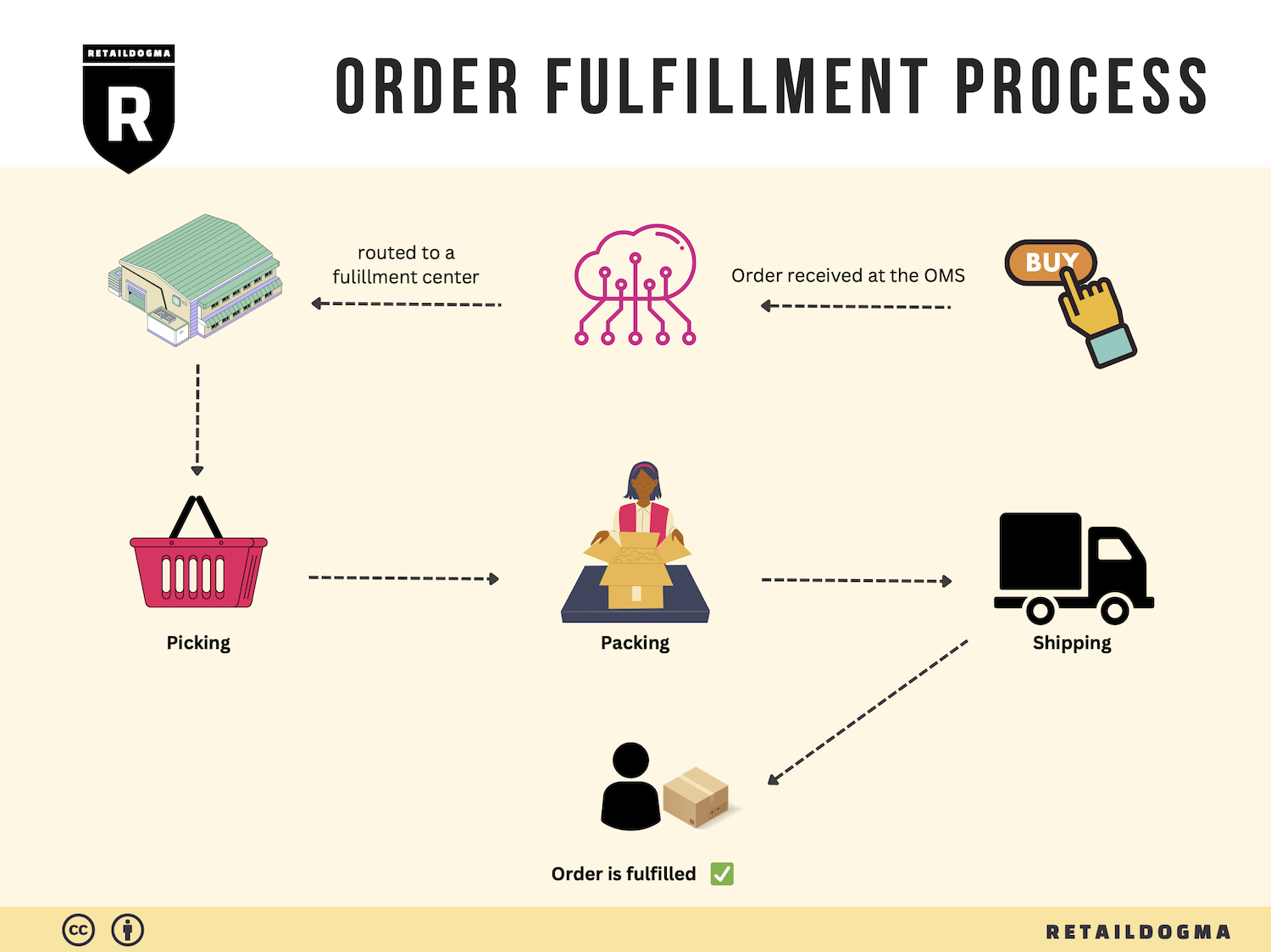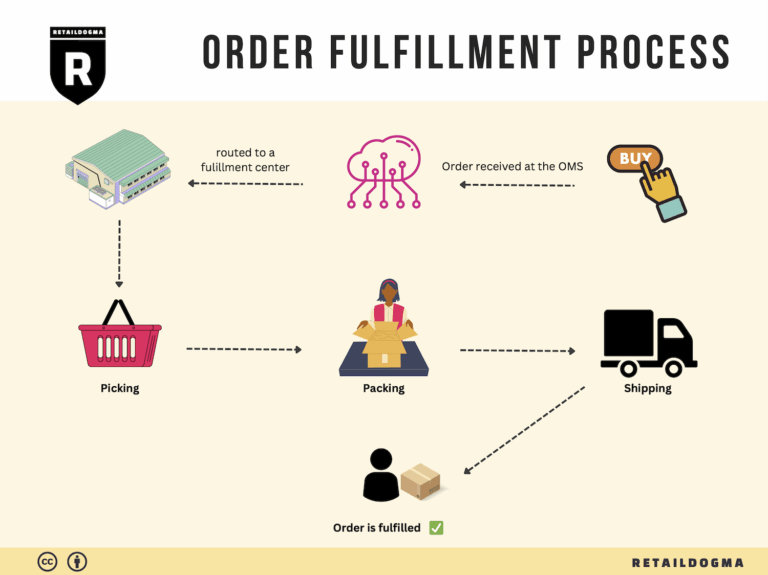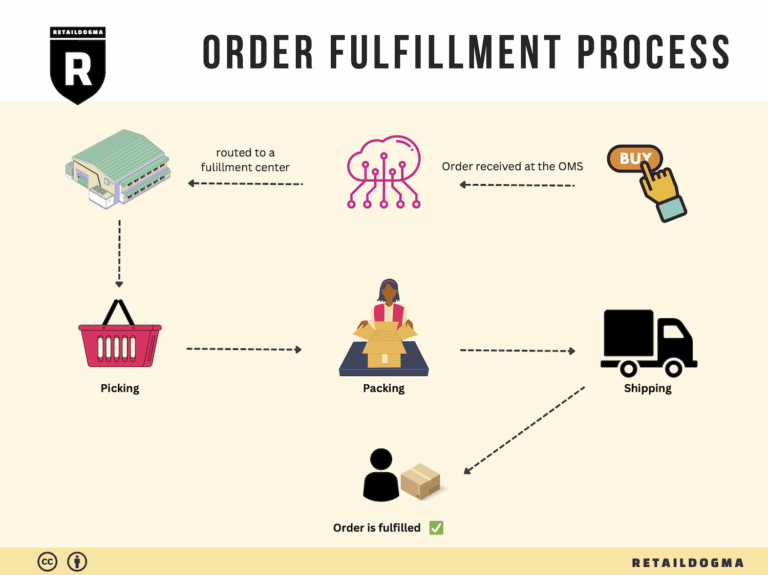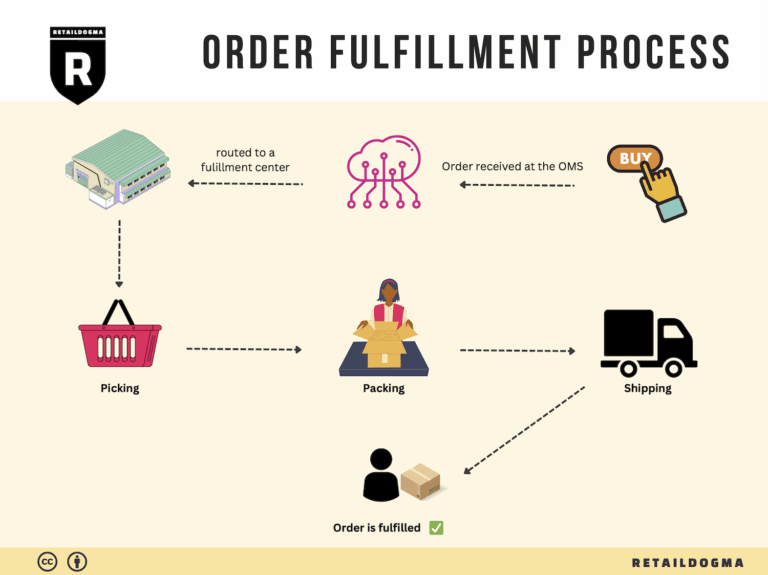Ecommerce Fulfillment Services: The Ultimate Guide (2025)
What is E-commerce Fulfillment? An Introduction for Growing Businesses
Understanding E-commerce Fulfillment
As an e-commerce business owner, you may find yourself overwhelmed by the complexities of packing and shipping orders. Managing logistics can quickly become a daunting task, diverting your focus from growth strategies and customer engagement. This is a common pain point for many growing online businesses. E-commerce fulfillment is the essential process that bridges the gap between product availability and customer satisfaction, ensuring that your products reach your customers efficiently and effectively.
At its core, e-commerce fulfillment involves a series of steps that include receiving inventory, storing products, processing orders, packing items, and finally shipping them to customers. When done right, fulfillment can enhance customer experience, foster repeat business, and support your brand’s reputation. However, for many businesses, the logistics of fulfillment can feel like a tangled web of responsibilities that are difficult to navigate alone.
This guide is designed to demystify e-commerce fulfillment and provide practical insights for growing businesses. We will explore various fulfillment models, such as Third-Party Logistics (3PL) and Fulfillment by Amazon (FBA), each of which offers unique advantages and challenges. Understanding these models will help you determine which approach aligns best with your operational needs and business goals.
Additionally, we will delve into the core services associated with fulfillment, including warehousing, inventory management, order processing, and shipping. Knowing what services are available will enable you to make informed decisions about what your business needs to thrive.
Choosing the right fulfillment partner is critical to your success. This guide will outline key factors to consider when evaluating potential partners, including their capabilities, technology integrations, and pricing structures. By understanding how to assess these elements, you can select a partner that not only meets your current needs but also scales with your business as it grows.
Finally, we will provide insights into pricing models for fulfillment services, helping you understand the costs involved and how to budget effectively.
The ultimate goal of this guide is to empower you to make smart, informed decisions about your logistics strategy. With the right knowledge and resources, you can streamline your fulfillment processes, reduce costs, and enhance your overall customer experience, setting the stage for sustained growth in your e-commerce business.
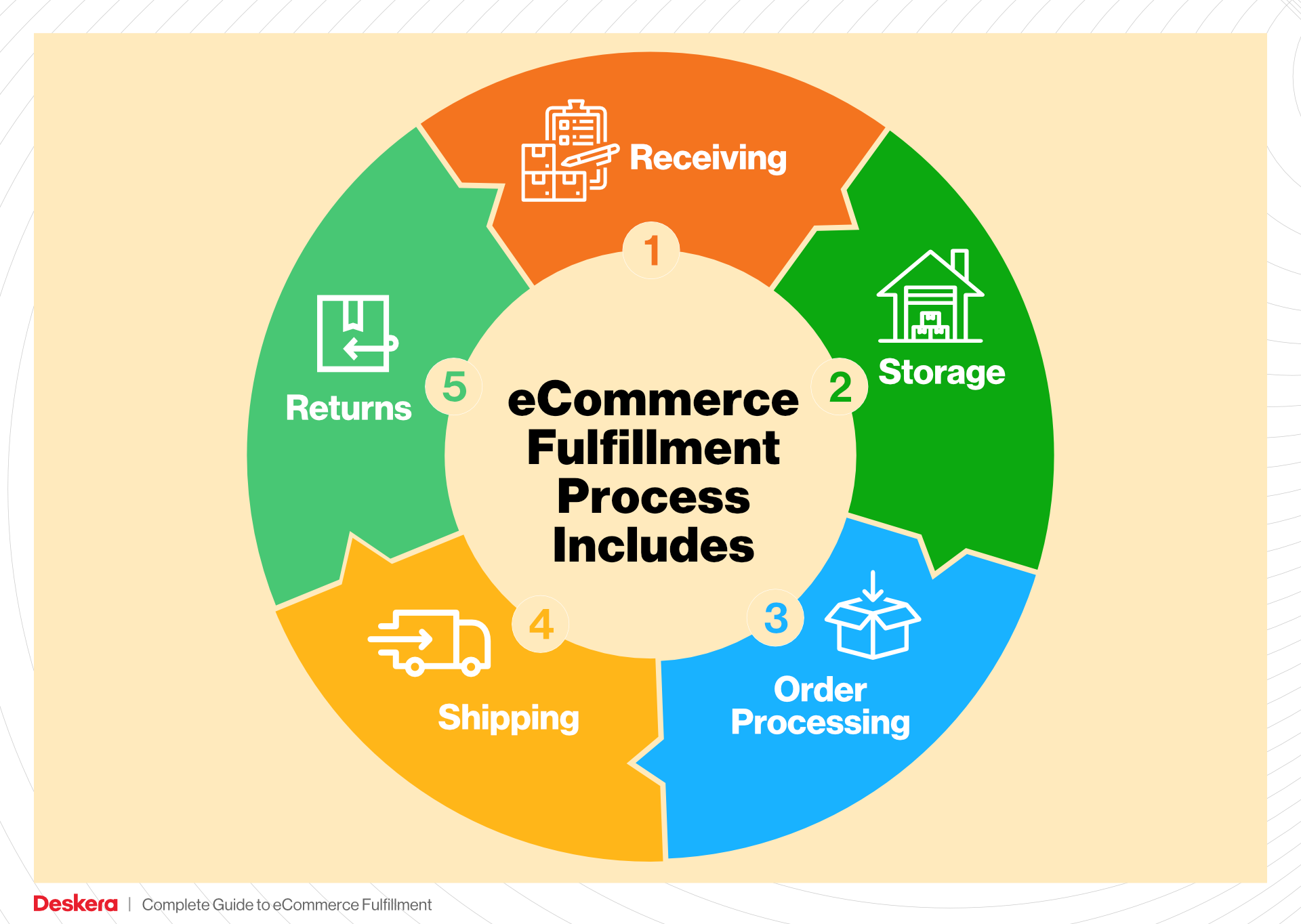
What You’ll Learn In This Guide
- What is E-commerce Fulfillment? An Introduction for Growing Businesses
- The Order Fulfillment Process: From ‘Buy’ Button to Customer’s Door
- Comparing Fulfillment Models: In-House vs. 3PL vs. Dropshipping
- A Deep Dive into Amazon FBA: Pros, Cons, and Who It’s For
- Core Services Offered by Fulfillment Centers
- How to Choose a Fulfillment Partner: A 6-Point Checklist
- Understanding Fulfillment Pricing: A Breakdown of Common Fees
- Frequently Asked Questions (FAQs) about Fulfillment
- Conclusion: Is Outsourcing Fulfillment the Right Move for Your Business?
- Important Disclaimer
The Order Fulfillment Process: From ‘Buy’ Button to Customer’s Door
1. Receiving Inventory
The order fulfillment process begins with receiving inventory, which is a critical step in ensuring that your e-commerce operations run smoothly. This stage involves the acceptance of goods from suppliers into your warehouse or fulfillment center. Key elements of this process include verifying the shipment against purchase orders, inspecting for damages, and ensuring that quantities match the expected amounts.
Importance: Accurate receiving is vital as it sets the foundation for all subsequent steps in the fulfillment process. Any discrepancies at this stage can lead to inventory inaccuracies, affecting order fulfillment and customer satisfaction.
Key Term: SKU (Stock Keeping Unit) – Each product is assigned a unique SKU, which aids in tracking inventory throughout the fulfillment process. Efficient SKU management ensures that products can be quickly located and processed during order fulfillment.
2. Warehouse Storage
Once inventory is received and verified, it is organized and stored within the warehouse. This involves categorizing products based on various factors such as size, weight, and demand frequency. Proper warehouse management systems (WMS) are often utilized to optimize space and improve inventory accuracy.
Importance: Efficient storage solutions minimize retrieval time and maximize warehouse space, which can lead to cost savings. A well-organized warehouse allows for quicker order processing and improved operational efficiency.
Key Term: FIFO (First In, First Out) – This inventory management technique ensures that older stock is sold before newer stock, reducing the risk of obsolescence and ensuring product freshness, particularly for perishable goods.
3. Order Picking
The next step is order picking, where items are selected from the warehouse based on customer orders. This process typically involves using pick lists, which detail the specific SKUs and quantities needed to fulfill each order.
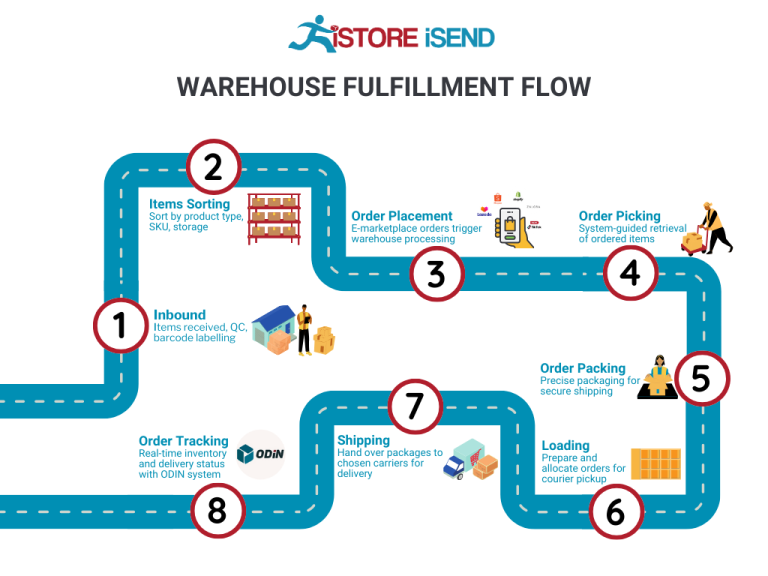
Importance: Efficient order picking is crucial for maintaining speed and accuracy in fulfillment. Delays or errors in this step can lead to customer dissatisfaction and increased operational costs due to returns or re-shipments.
Key Term: Pick Lists – These are generated documents that guide warehouse staff in selecting the correct items for orders. Utilizing technology, such as barcode scanners, can enhance the picking process by ensuring accuracy and efficiency.
4. Order Packing
After items are picked, they move to the packing stage. Here, products are carefully packaged for shipment. This includes selecting appropriate packing materials, labeling packages, and ensuring that items are secure to prevent damage during transit.
Importance: Proper packing not only protects items but also enhances the customer experience. A well-packaged order can leave a lasting impression, encouraging repeat business. Additionally, efficient packing processes can reduce shipping costs by optimizing package size and weight.
Key Term: Branded Packaging – Using custom packaging that reflects your brand can enhance customer satisfaction and recognition, contributing to a positive unboxing experience that can drive customer loyalty.
5. Shipping & Delivery
The final step in the order fulfillment process is shipping and delivery. This involves selecting the most efficient carrier for the shipment, generating shipping labels, and tracking orders to ensure timely delivery to customers.

Importance: Effective shipping and delivery strategies are critical for customer satisfaction. Fast, reliable delivery can differentiate your business in a competitive e-commerce landscape. Additionally, managing shipping costs can significantly impact your bottom line.
Key Term: Last-Mile Delivery – This term refers to the final step of the delivery process, where the package is transported from the distribution center to the customer’s doorstep. Optimizing last-mile delivery is essential for reducing costs and improving delivery times.
Conclusion
The order fulfillment process is a complex but vital aspect of e-commerce operations. By understanding and optimizing each step—from receiving inventory to shipping and delivery—businesses can enhance efficiency, reduce costs, and ultimately improve customer satisfaction. Leveraging technology and best practices at each stage will not only streamline operations but also support scalable growth in the competitive e-commerce market.
Comparing Fulfillment Models: In-House vs. 3PL vs. Dropshipping
Fulfillment Model Comparison
| Model | Who Handles Inventory | Best For (Business Stage) | Key Advantage | Key Disadvantage |
|---|---|---|---|---|
| In-House Fulfillment | Business itself | Startups to established brands | Full control over inventory and operations | High overhead costs and complexity |
| Third-Party Logistics (3PL) | 3PL provider | Growing businesses | Cost-effectiveness and scalability | Less control over the fulfillment process |
| Dropshipping | Supplier | Startups and small businesses | Low upfront investment and risk | Lower profit margins and reliance on suppliers |
In-House Fulfillment
In-house fulfillment involves managing the entire logistics process within your own organization. This includes receiving inventory, storing it, picking, packing, and shipping orders directly to customers. This model is particularly suitable for businesses that are either startups with a small volume of orders or established brands with the capacity to handle their logistics operations. The primary advantage of in-house fulfillment is the complete control it offers over inventory management and customer experience. Businesses can tailor their fulfillment processes to align closely with their brand values and customer expectations, ensuring high-quality service and quick response times.
However, the in-house model also presents significant challenges. The costs associated with maintaining warehousing facilities, hiring staff, and managing logistics can become burdensome, particularly for smaller businesses. Additionally, the complexity of logistics operations can divert focus from core business activities, such as marketing and product development. As the business scales, these challenges can become more pronounced, making it difficult to adapt quickly to changing market conditions or customer demands.
Third-Party Logistics (3PL)
Third-party logistics (3PL) involves outsourcing fulfillment operations to a specialized provider. This model is ideal for growing businesses that need to scale their operations without the significant investment in infrastructure and labor that in-house fulfillment requires. 3PL providers, like Baja Fulfillment, offer a range of services including warehousing, inventory management, and shipping, allowing businesses to focus on their core competencies while leveraging the expertise and resources of the 3PL partner.
The key advantage of utilizing a 3PL is the cost-effectiveness it provides. Businesses can benefit from reduced overhead costs associated with warehousing and labor, as well as the potential for lower shipping rates through established carrier relationships. Additionally, 3PLs often offer value-added services such as kitting, labeling, and returns management, which can enhance operational efficiency and improve customer satisfaction. However, one of the main drawbacks of this model is the reduced control over the fulfillment process. Businesses must rely on their 3PL partner to manage inventory and fulfill orders accurately and timely, which can lead to issues if the provider does not meet expectations.
Dropshipping
Dropshipping is a fulfillment model where the retailer does not hold inventory but instead relies on suppliers to ship products directly to customers upon receiving an order. This model is particularly attractive for startups and small businesses due to its low upfront investment and minimal risk. Since the retailer doesn’t need to maintain inventory, they can offer a wide range of products without the associated costs of storage or managing inventory.
The primary advantage of dropshipping is that it allows businesses to operate with a lean overhead structure. Retailers can test new products without committing significant capital to inventory, making it easier to pivot and adapt to market trends. However, dropshipping also comes with challenges, including lower profit margins, as suppliers typically charge a premium for their services. Additionally, businesses are at the mercy of their suppliers regarding product quality, shipping times, and inventory levels, which can lead to customer dissatisfaction if not managed properly. The reliance on third-party suppliers can also complicate the fulfillment process, resulting in potential delays and miscommunication.
Conclusion
When choosing a fulfillment model, e-commerce business owners must carefully evaluate their current business stage, operational capabilities, and long-term goals. In-house fulfillment offers complete control but comes with high costs and complexity. Third-party logistics providers present a scalable and cost-effective solution, though they may sacrifice some control over the fulfillment process. Lastly, dropshipping provides a low-risk entry point for startups but can lead to challenges with profit margins and supplier reliability. Ultimately, the best fulfillment strategy will depend on the unique needs and growth trajectory of the business.
A Deep Dive into Amazon FBA: Pros, Cons, and Who It’s For
Understanding Fulfillment by Amazon (FBA)
Fulfillment by Amazon (FBA) is a service offered by Amazon that allows sellers to store their products in Amazon’s fulfillment centers. Amazon takes care of storage, packaging, shipping, and customer service, allowing sellers to focus on other aspects of their business. With FBA, products are eligible for Amazon Prime and other Amazon services, which can significantly enhance visibility and sales potential.
How FBA Works
-
Set Up Your FBA Account: Sellers create an FBA account through Amazon Seller Central. Once set up, they can list their products as FBA items.
-
Send Inventory to Amazon: Sellers ship their products to Amazon’s fulfillment centers. Amazon provides guidelines on how to prepare and package items for shipment.
-
Storage and Fulfillment: Once the products arrive at the fulfillment center, Amazon stores them until an order is placed. When a customer orders an FBA product, Amazon handles the picking, packing, and shipping.
-
Customer Service and Returns: Amazon manages customer inquiries and returns for FBA products. This includes handling refunds and customer feedback.
-
Sales Reporting: Sellers can track sales, inventory levels, and performance metrics through the Amazon Seller Central dashboard.
Pros of Using FBA
1. Prime Eligibility
One of the most significant advantages of FBA is that products become eligible for Amazon Prime. This can dramatically increase sales, as Prime members tend to prefer products with faster shipping options. The Prime badge also enhances product visibility and credibility.
2. Customer Trust
Products fulfilled by Amazon benefit from Amazon’s established reputation for reliability and customer service. Customers are more likely to purchase items that are backed by Amazon’s fulfillment, which includes easy returns and customer support.
3. Multi-Channel Fulfillment
FBA allows sellers to use Amazon’s fulfillment services for orders placed on other sales channels, such as their own websites or other marketplaces. This multi-channel fulfillment capability can streamline operations and reduce logistics costs.
4. Scalability
FBA is designed to support sellers as they grow. With Amazon handling logistics, sellers can scale their businesses without the need to invest in warehousing or fulfillment infrastructure.
5. Time-Saving
By outsourcing fulfillment to Amazon, sellers can focus on growing their business, such as marketing and product development, instead of managing logistics.
Cons of Using FBA
1. High Fees
FBA comes with various fees, including storage fees and fulfillment fees. These costs can add up, particularly for sellers with low-margin products or those with excess inventory. Understanding the fee structure is crucial to maintaining profitability.
2. Strict Inventory Rules
Amazon imposes strict guidelines on inventory management, including requirements for packaging and labeling. Failure to comply can result in additional fees or penalties. Sellers must also be aware of storage limits and may face long-term storage fees for items that do not sell quickly.
3. Commingling Risks
FBA uses a commingling inventory system, where products from different sellers are stored together. This can lead to issues if there are quality control problems or if a seller’s product is damaged or returned. Sellers cannot always guarantee that the product shipped to customers is theirs, which can affect brand reputation.
4. Less Control Over Shipping
While Amazon handles shipping, sellers have limited control over the shipping process and delivery times. This can be problematic if there are delays or issues with shipping, as it directly affects customer satisfaction.
5. Competitive Marketplace
With many sellers using FBA, competition can be fierce. Standing out among numerous similar products requires effective marketing strategies and optimization techniques.
Who is FBA Best For?
Fulfillment by Amazon is particularly beneficial for:
-
Small to Medium-Sized Businesses: Sellers looking to scale without investing heavily in logistics can leverage FBA to reach a wider audience while minimizing operational burdens.
-
E-commerce Entrepreneurs: Those just starting out can benefit from Amazon’s infrastructure and customer trust, allowing them to focus on product sourcing and marketing.
-
Brands with High Turnover Products: Sellers with fast-moving consumer goods can take advantage of FBA’s efficient logistics to maintain inventory levels without incurring high storage fees.
-
Multi-Channel Sellers: Businesses selling across various platforms can streamline operations by using FBA for all order fulfillment, simplifying logistics.
-
International Sellers: Those looking to enter the U.S. market can utilize FBA’s established logistics network to facilitate cross-border shipping and sales.
In conclusion, while Fulfillment by Amazon offers a range of advantages, including increased visibility, customer trust, and scalability, it also presents challenges such as high fees and strict inventory rules. Evaluating these factors will help e-commerce business owners and entrepreneurs determine if FBA aligns with their operational goals and growth strategies.
Core Services Offered by Fulfillment Centers
Inventory Management & Warehousing
Effective inventory management and warehousing are the cornerstones of a successful fulfillment strategy. Fulfillment centers provide sophisticated inventory management systems that track stock levels, monitor product movements, and optimize storage solutions. By utilizing advanced technologies like barcode scanning and real-time inventory tracking, these centers ensure that e-commerce businesses have accurate visibility over their stock.
The benefits of robust inventory management are manifold. First, it helps prevent stockouts and overstock situations, allowing businesses to maintain optimal inventory levels. This not only improves cash flow but also enhances customer satisfaction, as customers are more likely to receive their orders on time. Additionally, efficient warehousing solutions reduce storage costs and streamline the picking process, enabling faster order fulfillment. For e-commerce businesses looking to scale, having a reliable warehousing solution is essential for maintaining a competitive edge in a fast-paced market.
Pick and Pack Services
Pick and pack services are integral to the order fulfillment process. This service involves selecting items from the warehouse (picking) and packaging them for shipment (packing). Fulfillment centers employ specialized staff and systems to ensure that orders are accurately picked and packed according to customer specifications.
The benefits of utilizing pick and pack services are significant. Firstly, they enhance operational efficiency by streamlining the order fulfillment process. Fulfillment centers can handle large volumes of orders quickly, which is crucial for businesses experiencing growth. Moreover, accurate pick and pack services minimize errors, reducing the likelihood of returns due to incorrect shipments. This not only saves time and resources but also fosters a positive customer experience, leading to repeat business and customer loyalty. In a landscape where speed and accuracy are paramount, effective pick and pack services can make a substantial difference.
Kitting and Assembly
Kitting and assembly services involve bundling individual products together to create a single, sellable unit. This can include assembling parts, packaging items together, or creating custom gift sets. Fulfillment centers that offer these services can help e-commerce businesses enhance their product offerings and improve inventory management.
The primary benefit of kitting and assembly is the ability to create unique product packages that attract customers. By offering bundled items, businesses can increase average order values and enhance customer satisfaction through tailored offerings. Additionally, kitting can simplify inventory management by reducing the number of individual SKUs that need to be tracked. This can lead to lower storage costs and more efficient picking processes. For e-commerce businesses looking to differentiate themselves in a crowded marketplace, kitting and assembly services provide a strategic advantage.
Returns Management (Reverse Logistics)
Returns management, also known as reverse logistics, is a critical component of the fulfillment process that focuses on handling returned products. Fulfillment centers provide systems and processes to manage returns efficiently, ensuring that returned items are processed, restocked, or disposed of appropriately.
The benefits of effective returns management are crucial for maintaining customer satisfaction and operational efficiency. A streamlined returns process enhances the customer experience by making it easy for customers to return products, which can lead to increased trust and loyalty. Additionally, efficient returns management helps businesses recover value from returned items, whether through restocking or refurbishment. This minimizes losses associated with returns and can even provide opportunities for resale. In an era where consumers expect hassle-free returns, having a robust returns management system in place is essential for e-commerce businesses aiming to scale and compete effectively.
In summary, fulfillment centers offer a suite of core services that are essential for e-commerce businesses looking to optimize their logistics and scale operations. From inventory management and pick and pack services to kitting and returns management, these services not only enhance operational efficiency but also contribute significantly to customer satisfaction and business growth. By leveraging these capabilities, e-commerce businesses can streamline their fulfillment processes, reduce costs, and ultimately deliver a better experience to their customers.
How to Choose a Fulfillment Partner: A 6-Point Checklist
Location & Warehouse Network
The geographical location of your fulfillment partner’s warehouses is crucial for efficient logistics and timely deliveries. A partner with strategically placed facilities can significantly reduce shipping times and costs, particularly when serving diverse markets.
Questions to Ask:
– Where are your fulfillment centers located, and how does this impact shipping to my target markets?
– What is your average shipping time for different regions?
– Do you have contingency plans for warehouse disruptions or delays?
Technology & Integrations
In today’s digital landscape, seamless technology integration is essential for efficient operations. A capable fulfillment partner should offer robust technology solutions that can integrate with your existing e-commerce platforms and tools, enabling real-time inventory management and order tracking.
Questions to Ask:
– What e-commerce platforms and systems do you integrate with?
– Can your technology provide real-time inventory updates and order tracking?
– How do you ensure data security and compliance with regulations?
Specializations (e.g., cold storage, oversized items)
Depending on your product line, you may require specialized services such as cold storage, hazardous materials handling, or the ability to manage oversized items. It’s crucial to choose a partner with the right capabilities to handle your specific logistics needs.
Questions to Ask:
– What specialized services do you offer that align with my product requirements?
– Do you have experience managing the logistics of my product type?
– Can you provide case studies or references from clients with similar needs?
Scalability & Capacity
As your business grows, so too will your fulfillment needs. A reliable partner should have the capacity to scale operations in line with your growth, ensuring that you can meet increased demand without compromising service quality.
Questions to Ask:
– What is your current capacity for handling orders, and how can you scale as my business grows?
– Do you have the ability to manage seasonal fluctuations in order volume?
– What is your process for onboarding new products and adjusting inventory levels?
Pricing and Contracts
Understanding the pricing structure and contract terms is vital to avoid unexpected costs that could impact your bottom line. Look for transparency in pricing and flexibility in contract terms, which can be critical for maintaining healthy cash flow.
Questions to Ask:
– Can you provide a detailed breakdown of your pricing structure, including any hidden fees?
– What are your contract terms regarding volume commitments and cancellation policies?
– Are there discounts available for higher order volumes or long-term partnerships?
Customer Support & Reviews
Exceptional customer support is a hallmark of a quality fulfillment partner. Responsive and knowledgeable support can make a significant difference when issues arise. Additionally, reviews from other clients can offer insights into the partner’s reliability and service quality.
Questions to Ask:
– What support channels do you offer (e.g., phone, email, live chat), and what are your response times?
– Can you provide references or case studies from current clients?
– How do you handle service issues or customer complaints, and what is your process for resolution?
Conclusion
Choosing the right fulfillment partner is a strategic decision that can impact your e-commerce business’s efficiency and customer satisfaction. By evaluating potential partners against this checklist, you can make a more informed choice that aligns with your operational needs and growth goals. Always remember to conduct thorough due diligence, and don’t hesitate to ask for demonstrations or trials where possible. Your fulfillment partner should not just be a service provider but a strategic ally in your business’s success.
Understanding Fulfillment Pricing: A Breakdown of Common Fees
Initial Setup Fees
Initial setup fees cover the costs associated with onboarding your business to a fulfillment provider’s system. This may include the integration of your e-commerce platform with the fulfillment center’s software, initial inventory setup, and configuration of logistics processes tailored to your needs. Typically, these fees can range from a few hundred to several thousand dollars, depending on the complexity of your operations and the level of customization required.
To calculate these fees, providers often consider factors such as the number of SKUs, the volume of orders expected, and any specific service requirements (like custom packaging or labeling). It’s essential to clarify what is included in these fees to avoid unexpected costs down the line.
Receiving Fees
Receiving fees are charged when your products arrive at the fulfillment center. These fees cover the costs of unloading, inspecting, and storing your inventory. They can vary based on the size and weight of the shipments, as well as the complexity of the receiving process (e.g., if special handling is required).
Providers typically charge per shipment or per hour for the labor involved in receiving goods. A common approach is to set a flat rate for standard shipments, while oversized or heavy items may incur additional charges. Understanding these costs upfront can help you budget for incoming inventory more effectively.
Storage Fees (per pallet/bin)
Storage fees are incurred for the space your inventory occupies within the fulfillment center. These fees are typically charged on a monthly basis and calculated per pallet or per bin, depending on how your products are stored.
The rates may vary based on the location of the warehouse, the type of inventory (e.g., bulky or fragile items), and the seasonality of your business (some providers may offer lower rates during off-peak seasons). It’s crucial to monitor your inventory levels and turnover rates to minimize storage costs. You may also want to negotiate these fees based on your expected volume or length of storage.
Pick & Pack Fees (per item/order)
Pick and pack fees are charged for the labor involved in retrieving items from storage and preparing them for shipment. This process includes picking the right items, packing them securely, and labeling the packages for delivery.
These fees can be structured in various ways—some providers charge per item picked, while others may charge a flat fee per order, regardless of the number of items. The complexity of the packing process (e.g., if special packing materials or configurations are needed) can also influence these fees. Understanding the pick and pack pricing structure will allow you to optimize your order fulfillment processes and control costs.
Shipping Fees
Shipping fees encompass the costs associated with transporting your orders to customers. These fees can vary significantly based on factors such as the shipping method (standard, expedited, or international), the weight and dimensions of the package, and the destination.
Most fulfillment providers work with a network of shipping carriers and can offer discounted rates due to their volume of shipments. Understanding the carrier options and their associated costs can help you choose the most cost-effective shipping solution. Additionally, consider discussing shipping strategies with your fulfillment partner to identify opportunities for cost savings.
Tips for Getting an Accurate Quote
-
Be Transparent About Your Needs: Provide detailed information about your product types, expected order volumes, and specific service requirements. This helps providers give you a more precise quote.
-
Compare Multiple Providers: Don’t settle for the first quote you receive. Comparing offers from different fulfillment providers can reveal significant variations in pricing and services.
-
Ask About Additional Fees: Inquire about any potential hidden fees that may not be included in the initial quote, such as fees for returns, special handling, or seasonal surcharges.
-
Negotiate Terms: Many fulfillment centers are open to negotiation, especially for businesses with higher order volumes. Discussing terms can lead to better pricing or additional services without added costs.
-
Review Your Growth Projections: If you expect your order volume to increase, consider discussing tiered pricing options or discounts for higher volumes with your fulfillment provider.
By taking these steps, you can better navigate the complexities of fulfillment pricing and ensure that you choose a partner that aligns with your business goals and budget.
Frequently Asked Questions (FAQs) about Fulfillment
1. What is Baja Fulfillment?
Baja Fulfillment is a third-party logistics (3PL) provider specializing in comprehensive logistics and fulfillment services for e-commerce businesses. They facilitate various processes from warehousing and inventory management to shipping and returns, particularly focusing on cross-border operations between the U.S. and Mexico.
2. What is a 3PL?
A third-party logistics (3PL) provider is a company that offers outsourced logistics services, including storage, warehousing, inventory management, order fulfillment, and shipping. Partnering with a 3PL allows businesses to streamline their supply chain operations, reduce costs, and focus on their core competencies.
3. What is the difference between a warehouse and a fulfillment center?
While both warehouses and fulfillment centers are used for storing goods, their purposes differ significantly. A warehouse primarily focuses on storage and inventory management, while a fulfillment center is designed for processing orders and shipping products directly to customers. Fulfillment centers often include value-added services like kitting, packing, and returns management.
4. How much do fulfillment services cost?
Fulfillment service costs can vary based on several factors, including order volume, types of services required (e.g., storage, picking, packing), and shipping destinations. Baja Fulfillment offers transparent pricing with no setup fees or long-term contracts, and custom quotes are available based on specific business needs.
5. What are the benefits of using Baja Fulfillment?
Baja Fulfillment provides several advantages, including duty deferral programs that can reduce import duties, value-added services such as kitting and custom packaging, and a nearshore model that minimizes transit times and shipping costs. These benefits contribute to improved cash flow, healthier profit margins, and enhanced customer satisfaction.
6. How does Baja Fulfillment handle international shipping?
Baja Fulfillment manages international shipping through its strategically located facilities in Mexico and the U.S., enabling efficient cross-border logistics. Their expertise in customs clearance and compliance ensures that products move quickly and cost-effectively across borders, streamlining the shipping process for e-commerce brands.
7. What value-added services does Baja Fulfillment offer?
Baja Fulfillment provides a range of value-added services, including kitting, labeling, custom packaging, inventory control, returns management, and quality checks. These services enhance operational efficiency and allow businesses to deliver a branded customer experience at scale.
8. How can Baja Fulfillment help my business scale?
By leveraging Baja Fulfillment’s services, businesses can reduce operational overhead, optimize logistics, and improve speed-to-market. Their nearshore facilities allow for faster delivery times and lower shipping costs, enabling e-commerce brands to scale their operations efficiently while maintaining customer satisfaction.
9. What e-commerce platforms does Baja Fulfillment integrate with?
Baja Fulfillment integrates seamlessly with various e-commerce platforms, including Shopify, BigCommerce, Magento, and WooCommerce, as well as marketplaces like Amazon, eBay, and Walmart. This integration enhances service agility and allows for streamlined order processing and fulfillment.
10. How can I get started with Baja Fulfillment?
To get started with Baja Fulfillment, you can request a quote through their website or contact their customer service team. They will work with you to understand your specific logistics needs and provide tailored solutions that align with your business goals.
Conclusion: Is Outsourcing Fulfillment the Right Move for Your Business?
Evaluating the Benefits of Outsourcing Fulfillment
Outsourcing fulfillment can be a transformative move for e-commerce businesses, offering several key advantages that can significantly impact your operational efficiency and growth trajectory. One of the most compelling benefits is time savings. By delegating the complexities of warehousing, inventory management, and shipping to a third-party logistics (3PL) provider, you free up valuable resources to focus on core business activities such as product development and marketing.
Scalability is another critical factor. As your business grows, so do your logistical demands. A proficient fulfillment partner can seamlessly adjust to increased order volumes, seasonal fluctuations, and expanding product lines without the need for substantial upfront investments in infrastructure. This adaptability not only enhances your capacity to meet customer expectations but also enables you to pivot quickly in a dynamic market.
Moreover, leveraging the expertise of a fulfillment service allows you to tap into specialized knowledge and technologies that may be beyond your current capabilities. From advanced inventory management systems to optimized shipping routes, these resources can lead to cost savings and improved customer satisfaction.
However, choosing the right fulfillment partner is paramount. Not all providers are created equal; the ideal partner should align with your business goals, offer tailored solutions, and demonstrate a proven track record in your industry.
Take Action
To determine if outsourcing fulfillment is the right step for your business, consider conducting a thorough audit of your current shipping processes. Evaluate your costs, delivery times, and overall customer satisfaction. This analysis will help you identify inefficiencies and clarify whether a strategic partnership with a fulfillment service like Baja Fulfillment can elevate your operations and fuel your growth. Don’t hesitate—take the first step toward optimizing your logistics today.
Important Disclaimer
⚠️ Important Disclaimer
The information in this guide is for educational purposes. Fulfillment services, pricing, and platform features change frequently. Always conduct your own due diligence and consult with providers directly before making business decisions.
